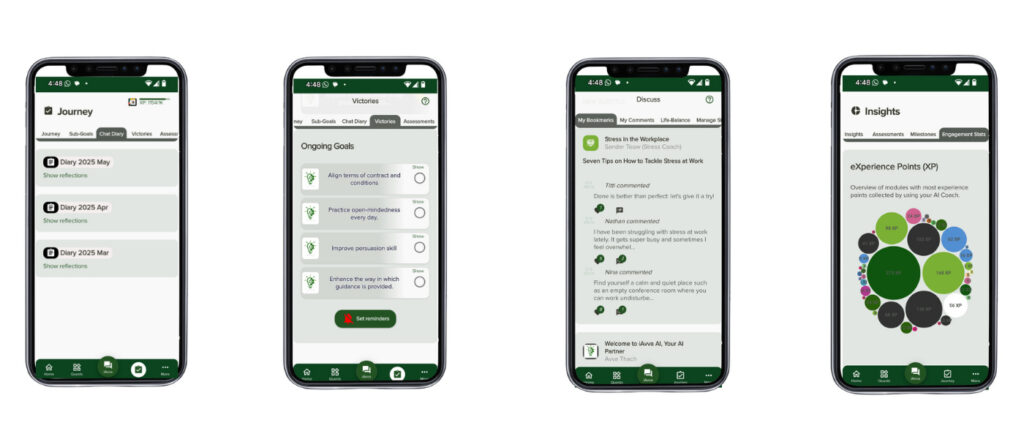In today’s fast-paced business environment, corporate training has emerged as a cornerstone for organizational success. Companies are increasingly recognizing that their most valuable asset is their workforce, and investing in employee development is essential for maintaining a competitive edge. Training not only enhances individual skills but also fosters a culture of innovation and adaptability within the organization.
As industries evolve and new technologies emerge, continuous learning becomes imperative for employees to stay relevant and effective in their roles. Moreover, corporate training plays a crucial role in employee retention. When organizations prioritize the growth and development of their employees, they cultivate a sense of loyalty and commitment.
Employees who feel supported in their professional journey are more likely to remain with the company, reducing turnover rates and the associated costs of hiring and onboarding new talent. Thus, corporate training is not merely an expense; it is an investment that yields significant returns in terms of productivity, morale, and overall organizational performance.
Key Takeaways
- Corporate training is important for enhancing employee skills and knowledge, improving performance, and driving organizational success.
- Identifying training needs and setting clear objectives are crucial for designing effective training programs that address specific skill gaps and business goals.
- Effective training programs should be designed with consideration of different learning styles, interactive methods, and real-world application of knowledge.
- Implementing training strategies involves engaging employees, providing necessary resources, and creating a supportive learning environment.
- Leveraging technology for training can enhance accessibility, flexibility, and engagement, and enable tracking and measuring of training effectiveness.
Identifying Training Needs and Objectives
The first step in developing an effective training program is to identify the specific needs and objectives of the organization. This process begins with a thorough assessment of the current skills and competencies of employees, as well as an analysis of the gaps that exist between these skills and the demands of their roles. Conducting surveys, interviews, and performance evaluations can provide valuable insights into areas where training is necessary.
By understanding these needs, organizations can tailor their training initiatives to address the most pressing challenges. Setting clear objectives is equally important in this phase. Training objectives should be specific, measurable, achievable, relevant, and time-bound (SMART).
For instance, rather than simply stating that employees need to improve their communication skills, a more effective objective would be to enhance presentation skills among team leaders by 30% within six months. This clarity not only guides the design of the training program but also helps in evaluating its success later on. By aligning training needs with organizational goals, companies can ensure that their training efforts contribute directly to overall business success.
Designing Effective Training Programs

Once training needs and objectives have been identified, the next step is to design effective training programs that cater to those requirements. A well-structured training program should incorporate various learning methodologies to accommodate different learning styles among employees. This could include a mix of classroom instruction, hands-on workshops, e-learning modules, and on-the-job training.
By diversifying the training approach, organizations can enhance engagement and retention of information. Additionally, it is essential to ensure that the content of the training program is relevant and up-to-date. Collaborating with subject matter experts can help in creating high-quality materials that reflect current industry standards and practices.
Furthermore, incorporating real-world scenarios and case studies can make the training more relatable and applicable to employees’ daily tasks. By focusing on practical applications of knowledge, organizations can empower employees to transfer what they learn into their work environment effectively.
Implementing Training Strategies
| Training Strategy | Metrics |
|---|---|
| New Hire Training | Retention Rate, Time to Competency |
| On-the-Job Training | Productivity Improvement, Error Reduction |
| Online Training | Completion Rate, Knowledge Retention |
| Leadership Development | Promotion Rate, Employee Satisfaction |
Implementing training strategies requires careful planning and execution to ensure that the program runs smoothly and achieves its intended outcomes. One effective approach is to establish a timeline for the training sessions, outlining when each module will take place and how long each session will last. This structured approach helps in managing participants’ expectations and allows for better resource allocation.
Moreover, it is crucial to communicate the importance of the training program to all employees. Leadership should actively promote participation by highlighting the benefits of the training for both individual career growth and organizational success. Creating a supportive environment where employees feel encouraged to engage in training can significantly enhance participation rates.
Additionally, providing incentives for completing training programs can further motivate employees to take part actively.
Leveraging Technology for Training
Incorporating technology into corporate training has revolutionized how organizations deliver learning experiences. E-learning platforms, virtual classrooms, and mobile learning applications have made it easier for employees to access training materials anytime and anywhere. This flexibility allows employees to learn at their own pace, accommodating different schedules and learning preferences.
Furthermore, technology enables organizations to track employee progress and engagement through analytics tools. By monitoring participation rates, completion times, and assessment scores, companies can gain valuable insights into the effectiveness of their training programs. This data-driven approach allows for continuous improvement of training initiatives by identifying areas that may require adjustments or enhancements.
Measuring Training Effectiveness

Measuring the effectiveness of training programs is essential for understanding their impact on employee performance and organizational outcomes. One common method is to use pre- and post-training assessments to evaluate knowledge retention and skill acquisition. By comparing results before and after the training, organizations can gauge whether employees have successfully absorbed the material.
Additionally, gathering feedback from participants through surveys or focus groups can provide qualitative insights into their experiences with the training program. Understanding employee perceptions can help identify strengths and weaknesses in the program design and delivery. Ultimately, measuring effectiveness not only validates the investment in training but also informs future initiatives by highlighting best practices and areas for improvement.
Providing Ongoing Support and Resources
Training should not be viewed as a one-time event but rather as part of an ongoing development process. Providing ongoing support and resources is crucial for reinforcing learning and ensuring that employees can apply their new skills effectively. This could include access to online resources such as articles, videos, or forums where employees can continue to learn and share knowledge with peers.
Pairing less experienced employees with seasoned professionals allows for knowledge transfer and provides a support system for navigating challenges in their roles. By fostering an environment where continuous learning is encouraged, organizations can maximize the long-term benefits of their training initiatives.
Encouraging Employee Engagement and Participation
Engaging employees in their own development is vital for the success of any training program. Organizations should actively seek ways to involve employees in the planning process by soliciting their input on topics they find relevant or challenging. When employees feel that their voices are heard, they are more likely to take ownership of their learning journey.
Creating a positive learning culture also plays a significant role in encouraging participation. Celebrating achievements, recognizing progress, and providing opportunities for employees to showcase their newly acquired skills can boost motivation and enthusiasm for training initiatives. By fostering an environment where learning is valued and rewarded, organizations can cultivate a workforce that is eager to engage in continuous development.
Fostering a Culture of Continuous Learning
A culture of continuous learning is essential for organizations aiming to thrive in an ever-changing business landscape. This culture encourages employees to view learning as an integral part of their professional lives rather than a series of isolated events. Leaders play a critical role in modeling this behavior by prioritizing their own development and sharing their learning experiences with their teams.
To foster this culture effectively, organizations should provide various opportunities for learning beyond formal training programs. This could include lunch-and-learn sessions, cross-departmental projects, or access to industry conferences and workshops. By creating an environment where curiosity is encouraged and knowledge sharing is commonplace, organizations can empower employees to take charge of their own growth while contributing to collective success.
Empowering Employees to Apply New Skills and Knowledge
Empowering employees to apply what they have learned during training is crucial for translating knowledge into action. Organizations should create opportunities for employees to practice new skills in real-world scenarios through projects or assignments that align with their training objectives. This hands-on experience reinforces learning and builds confidence in applying new competencies.
Additionally, providing constructive feedback during this application phase is essential for growth. Managers should offer guidance and support as employees navigate challenges while implementing new skills. Encouraging open communication about successes and setbacks fosters a safe space for experimentation and learning from mistakes, ultimately leading to greater proficiency over time.
Evaluating the Impact of Training on Employee Performance and Organizational Success
The final step in the corporate training process involves evaluating its impact on both employee performance and overall organizational success. This evaluation should consider various metrics such as productivity levels, employee satisfaction scores, retention rates, and even financial performance indicators where applicable. By analyzing these metrics over time, organizations can determine whether their investment in training has yielded tangible results.
Furthermore, it is essential to communicate these outcomes back to stakeholders within the organization. Sharing success stories or data-driven insights about how training has positively influenced performance can reinforce the value of ongoing investment in employee development. Ultimately, demonstrating a clear link between training initiatives and organizational success not only justifies current efforts but also paves the way for future investments in corporate training programs.
In conclusion, corporate training is a multifaceted endeavor that requires careful planning, execution, and evaluation. By understanding its importance, identifying needs, designing effective programs, leveraging technology, measuring effectiveness, providing ongoing support, encouraging engagement, fostering a culture of continuous learning, empowering application of skills, and evaluating impact—organizations can create robust training initiatives that drive both employee growth and organizational success.
In the ever-evolving landscape of corporate training, understanding the nuances between different types of professional development is crucial for organizational success. A related article that delves into this topic is titled “Leadership Development vs. Management Training: What’s the Real Difference?” This piece explores the distinct objectives and outcomes of leadership development compared to management training, providing valuable insights for companies aiming to enhance their training programs. For a deeper understanding, you can read the full article by following this link.
FAQs
What is corporate training?
Corporate training refers to the process of providing employees with the knowledge and skills they need to perform their job effectively. This can include training on specific job tasks, company policies, industry regulations, and professional development.
Why is corporate training important?
Corporate training is important because it helps employees stay up-to-date with industry trends, improves their job performance, and enhances their overall productivity. It also helps organizations remain competitive and adapt to changes in the business environment.
What are the different types of corporate training?
There are various types of corporate training, including on-the-job training, classroom training, online training, workshops, seminars, and conferences. Training can cover a wide range of topics, such as technical skills, leadership development, diversity and inclusion, and compliance training.
How is corporate training typically delivered?
Corporate training can be delivered through a variety of methods, including in-person sessions, virtual classrooms, e-learning platforms, webinars, and self-paced modules. The delivery method often depends on the nature of the training and the needs of the employees.
Who is responsible for providing corporate training?
Corporate training is typically the responsibility of the human resources department or a dedicated training and development team within an organization. In some cases, external training providers or consultants may be brought in to deliver specialized training programs.
How can organizations measure the effectiveness of corporate training?
Organizations can measure the effectiveness of corporate training through various methods, such as employee feedback, performance evaluations, skills assessments, and tracking key performance indicators related to the training objectives. This helps determine the return on investment and identify areas for improvement.





















Leave a Reply